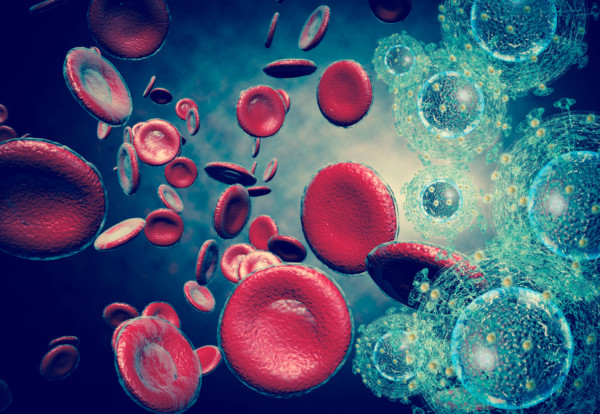
Contents
What is aspartic acid?
There are two forms of aspartic acid, L-aspartic acid and D-aspartic acid. L-aspartic acid is the only form incorporated directly into proteins, while the biological role of D-aspartic acid is more limited. L-aspartic acid is often referred to as L-aspartate, or simply aspartic acid.
This non-essential amino acid has an important role in the Krebs cycle, also known as the citric acid cycle. During this process the body synthesises biochemical components and other amino acids. These include lysine, arginine, asparagines, threonine, methionine, isoleucine, and several nucleotides.
Thus, L-aspartic acid is essential for energy production and plays a key role in metabolism. It is also an excitatory amino acid neurotransmitter and it is important in central nervous system synapses.
Health benefits
Energy production
Aspartic acid is vital for generating cellular activity. It transports coenzyme nicotinamide adenine dinucleotide (NADH) molecules from the cell into the mitochondria. Here, the body uses NADH to produce adenosine triphosphate (ATP). This coenzyme works to transport chemical energy throughout the cell, facilitating metabolism.
Therefore, the higher the availability of NADH within the cell, the more ATP can be produced. This leads to a healthy metabolism, which translates into more energy for the body.
Immune function
Aspartic acid is important for the production of immunoglobulins and antibodies. These are glycoprotein molecules produced by white blood cells (plasma cells). They are a critical component of the body’s immune function.
Immunoglobulins and antibodies are responsible for recognising and binding to antigens, such as viruses and bacteria. They also help to destroy these foreign bodies. There are many different immunoglobulin isotypes and without this amino acid, the body cannot synthesise many of these compounds.
RNA and DNA

For the body to produce healthy RNA and DNA, it requires aspartic acid. This amino acid assists with the transportation of the mineral needed by cells to replicate DNA and RNA.
In the absence of this amino acid, genetic mutations may arise.
Cognitive function
This chemical is important for cognitive function as it supplies the brain with NADH. This helps to support the brain in maintaining the necessary levels of specific chemicals and neurotransmitters which are important for normal mental functioning.
Toxin removal
The body continues to produce toxins as a by product of cellular activity. This amino acid helps to remove toxins such as ammonia. But if the body cannot regulate ammonia levels, this chemical can damage the liver, nervous system, and brain.
Reproduction
 Aspartic acid is also important in the neuroendocrine system. This amino acid plays an important role in regulating the production and release of certain hormones. In the pituitary gland, it stimulates the secretion of prolactin, enabling milk production in mammals.
Aspartic acid is also important in the neuroendocrine system. This amino acid plays an important role in regulating the production and release of certain hormones. In the pituitary gland, it stimulates the secretion of prolactin, enabling milk production in mammals.
Additionally, it has a role in the production of luteinizing hormone (LH). This is important for testosterone synthesis in males and regulation of the menstrual cycle and ovulation in females. This amino acid also regulates the synthesis and release of growth hormone (GH).
Aspartic acid deficiency
As the body is able to manufacture its own L-aspartic acid, deficiencies are rare. They usually only occur in people on a low protein diet, or people suffering from malnutrition or an eating disorder. There may also be periods of illness which can increase the body’s demand for aspartic acid.
When aspartic acid is deficient there is a deterioration of physical ability. Metabolism and other functions within the body decline. One of the common symptoms of low aspartic acid levels is chronic fatigue and reduced stamina.
Several studies have suggested that athletes or people suffering from chronic fatigue may benefit from increasing their intake of this amino acid1, 2. Not only can this help to elevate energy levels, it can also assist with the removal of excess ammonia as a byproduct of exercise3.
High levels of ammonia and low levels of L-aspartic acid can lead to damage to the brain, liver, and nervous system. Some of the common symptoms include irritability, poor concentration, loss of energy, chronic headaches, and intolerance to high-protein foods.
Additionally there is an association between low levels of this amino acid and deficiencies in magnesium and calcium. This can contribute towards other health problems.
Dietary sources

As aspartic acid is a non-essential amino acid, the body is able to produce it. This amino acid is also present in beef, dairy, sugar cane, poultry, sea food, sugar beet molasses, asparagus, avocado, sprouting seeds, and oats.
Furthermore this amino acid is often a component of dietary supplements. It may be present in the form of aspartic acid itself, or as a form of salt, such as magnesium aspartate.
Many athletes, including body builders, take supplements containing this amino acid. It is often present in whey protein powder bars and energy boosting drinks.
Dosage
For people involved in athletic sports where physical endurance is important, supplements of aspartic acid salts are often taken regularly. Tablets containing natural L-aspartic acid are preferred for high bioavailability.
The usual dose is 500mg one to three times a day with fruit juice or water on an empty stomach, approximately 30 minutes before the meal time. Protein should not be consumed at the same time as the supplement as it can interfere with the body’s ability to utilise this amino acid.
Excessive doses of this amino acid may have the same effects as consuming too much protein. It can damage the kidneys and liver, increasing the risk of developing gout. As with any supplementation, it is best to consult with a health professional before taking them to ensure that they will not interfere with any existing health problems.
References
- Wesson, M. et.al. (1987). Effects of oral administration of aspartic acid salts on the endurance capacity of trained athletes. Research Quarterly for Exercise and Sport, Volume 59, Issue 3, (pp. 234-9). ↩
- Formica P. (1962). The housewife syndrome. Treatment with the potassium and magnesium salts of aspartic acid. Current Therapeutic Research, Clinical and Experimental. Volume 4, (pp. 98-106). ↩
- Barns, R. et.al. (1964). Effects of exercise and administration of aspartic acid on blood ammonia in the rat. American Journal of Physiology. Volume 207, Issue 6, (pp.1242-6). ↩
